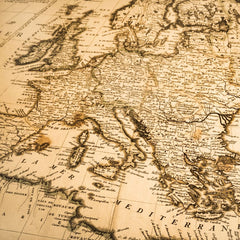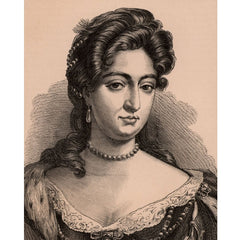The History of Macramé
A History of Macramé Have you ever wondered how your favourite craft originated, or who inspired your favourite wall hanging? We have put together this short article to give you a bit of background, and let you know how macramé arrived in the UK.More

The History of Macramé
Macramé has made a big comeback, either for people wanting to give their home a boho chic look, or those that just enjoy the craft. But how long has it been around for, and how did it start? We thought we’d find out, and share the history with our readers.

Although macramé is a French word, it is likely to have originated from the Arabic words migramah and migrama, which are to do with weaving and headwear.
Whilst modern macramé originated in the 13th century by Arabic weavers, who used the decorative knots to finish loose ends on hand woven textiles, there are signs that it dated back to 3rd Century China, in the textiles, wall hangings, and hand lanterns from that era. But it was from the Arabic weavers that macramé spread to Europe.
Starting in Spain, Moors travelling from North Africa, taught the Spanish locals the craft of macramé. The technique then spread to France in the 14th century, and on to Italy, becoming particularly popular in Genoa and Liguria.
It was in the Netherlands in the 17th century, that Queen Mary II (pictured below) was introduced to macramé. It is believed that it was the Queen herself who brought the technique to England, where it became popular with the ladies at the British Court; Queen Mary even taught macramé to her ladies-in-waiting.  Another Royal who enjoyed the art of macramé was Queen Charlotte, who arranged for many furnishings in her residence to be trimmed with macramé lace!
Another Royal who enjoyed the art of macramé was Queen Charlotte, who arranged for many furnishings in her residence to be trimmed with macramé lace!
Sailors also played their part in spreading macramé around the globe. Knots are a useful skill to have on ships, but the decorative knots kept their minds busy during the long periods at sea. They then sold their crafts (usually hammocks, hats and belts) upon arrival at the port of their destination. No one knows how far back their involvement in sharing the knowledge goes - the earliest documents that detail this information only date back to the 18th century.
Macramé was at its most popular during the Victorian era, and was taught to young women as part of their education. It was during this time that the book ‘Sylvia’s Book of Macramé Lace’ was published.
The 1970s is the era macramé is best known for, with the New York Times even reporting on a macramé Christmas tree! Most houses had macramé wall hangings, and it wasn’t uncommon to see people walking round in macramé vests. But by the 1980s the popularity had waned once again.
It’s only been in the last few years, mostly attributed to the rising popularity of house plants, that macramé has resurfaced once again, although this time around the creations look natural and stylish, giving a chilled out, calm feel. We’ll see how long it stays around for this time, but going by the current trend, it looks like it will be for quite a while.
Now you know the history, we have plenty of other blogs and guides to give you inspiration for your next project, or even to help you get started with macramé!
If you're short on cord, then click here to shop on our website
Thank you for reading!
What's Your Reaction?































